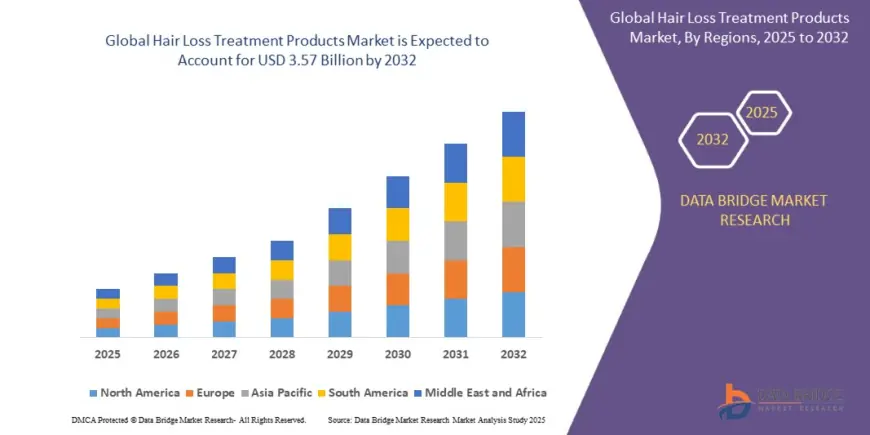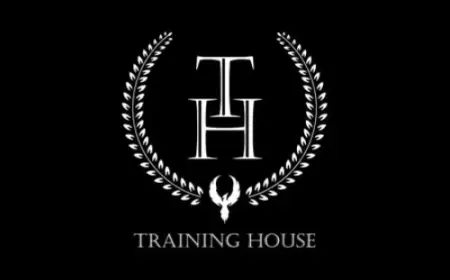Hair Loss Treatment Products Market Industry Statistics: Growth, Share, Value, Insights, and Trends

Introduction
Hair loss is a widespread concern affecting millions of people worldwide. Whether caused by genetics, hormonal changes, stress, or lifestyle factors, hair thinning and baldness can impact confidence and self-esteem. The demand for hair loss treatment products has surged in recent years, with individuals seeking effective solutions to prevent hair fall and promote regrowth.
The global hair loss treatment market is experiencing rapid expansion, driven by increasing awareness, rising disposable incomes, and advancements in dermatological research. With a variety of treatment options available, from topical applications to advanced laser therapies, the market presents vast opportunities for brands and consumers alike.
1. Understanding Hair Loss
1.1 What Causes Hair Loss?
Hair loss can result from various factors, including:
-
Genetic Factors: Androgenetic alopecia, commonly known as male or female pattern baldness, is hereditary and affects a significant portion of the population.
-
Hormonal Imbalances: Changes in hormone levels, especially during pregnancy, menopause, or due to thyroid disorders, can contribute to hair loss.
-
Nutritional Deficiencies: A lack of essential nutrients such as biotin, iron, and protein can weaken hair and cause shedding.
-
Stress and Lifestyle: High-stress levels, poor diet, lack of sleep, and exposure to pollutants can negatively affect hair health.
-
Medical Conditions: Conditions such as alopecia areata, scalp infections, and autoimmune disorders can lead to excessive hair fall.
1.2 Types of Hair Loss
Different types of hair loss require targeted treatments. The most common types include:
-
Androgenetic Alopecia: A hereditary condition that leads to gradual thinning of hair in men and women.
-
Alopecia Areata: An autoimmune disorder where the immune system attacks hair follicles, causing patches of hair loss.
-
Telogen Effluvium: Temporary hair loss due to stress, illness, or sudden weight loss.
-
Traction Alopecia: Hair loss caused by excessive pulling or tight hairstyles like braids and ponytails.
2. Hair Loss Treatment Products: An Overview
2.1 Types of Hair Loss Treatment Products
A variety of hair loss treatment products are available in the market, including:
-
Topical Treatments: Minoxidil-based solutions, hair serums, and essential oils that stimulate hair follicles.
-
Oral Medications: Prescription drugs like finasteride and dietary supplements containing biotin, zinc, and other hair-boosting nutrients.
-
Hair Growth Shampoos & Conditioners: Specialized formulations that cleanse the scalp and strengthen hair roots.
-
Laser Therapy Devices: Low-level laser therapy (LLLT) devices that enhance scalp circulation and promote hair growth.
-
Natural & Herbal Remedies: Products containing ingredients like saw palmetto, onion juice, aloe vera, and caffeine.
2.2 Key Ingredients in Hair Growth Products
Effective hair loss treatment products often include:
-
Minoxidil: FDA-approved ingredient that stimulates hair growth.
-
Finasteride: A prescription drug that helps block DHT, the hormone responsible for hair loss.
-
Biotin: A vitamin that supports keratin production and strengthens hair.
-
Caffeine: Helps stimulate hair follicles and improve scalp circulation.
-
Essential Oils: Such as rosemary, peppermint, and castor oil, which enhance hair growth naturally.
3. Market Analysis: Growth, Trends, and Opportunities
3.1 Global Market Size and Growth Rate
The global hair loss treatment products market has experienced substantial growth in recent years, driven by increased consumer awareness and advancements in dermatological research. According to market reports, the industry was valued at over $8 billion in 2023 and is expected to grow at a CAGR (Compound Annual Growth Rate) of 6-8% through 2030.
Key factors fueling this growth include:
-
Rising prevalence of hair loss due to stress, pollution, and unhealthy lifestyles.
-
Growing demand for organic and chemical-free hair products.
-
Increasing disposable income, allowing consumers to spend more on personal care.
-
E-commerce boom, making hair loss treatments more accessible worldwide.
3.2 Key Market Trends
Several emerging trends are shaping the hair loss treatment industry:
-
Shift Toward Natural and Organic Solutions: Consumers are increasingly avoiding chemical-based treatments and opting for plant-based, sulfate-free, and paraben-free formulations.
-
Gender-Specific Hair Loss Products: More brands are launching products tailored to men and women, acknowledging that hair loss patterns and causes differ between genders.
-
Advancements in Technology: Laser therapy and microneedling devices are gaining popularity as alternative treatments for hair regrowth.
-
Subscription-Based Models: Brands like Keeps and Hims are offering personalized hair care subscriptions, providing consumers with a continuous supply of treatment solutions.
3.3 Regional Analysis
The demand for hair loss treatment products varies by region:
-
North America: Leading market due to high consumer awareness and availability of advanced hair care treatments.
-
Europe: Growing preference for organic and herbal hair loss solutions.
-
Asia-Pacific: Fastest-growing market due to increasing disposable income and rising pollution levels contributing to hair loss.
-
Latin America & Africa: Emerging markets with rising consumer demand and improved access to global brands.
4. Key Players in the Hair Loss Treatment Market
4.1 Leading Companies and Brands
Several companies dominate the hair loss treatment industry, offering innovative products to cater to different consumer needs. Key players include:
-
Rogaine (Johnson & Johnson) – Leading brand for minoxidil-based treatments.
-
Keeps – Subscription-based model offering FDA-approved treatments.
-
Hims & Hers – Direct-to-consumer brand focused on hair regrowth solutions.
-
Nutrafol – Specializes in natural, nutraceutical-based hair loss treatments.
-
Viviscal – Offers clinically proven hair growth supplements.
4.2 Competitive Landscape
The industry is highly competitive, with companies focusing on:
-
Product Innovation – Launching advanced formulas with clinically proven ingredients.
-
Mergers & Acquisitions – Companies acquiring smaller brands to expand product offerings.
-
Marketing Strategies – Influencer collaborations and digital campaigns driving brand engagement.
5. Consumer Behavior and Buying Trends
5.1 Factors Influencing Consumer Choice
Consumers consider several factors before purchasing hair loss treatment products:
-
Effectiveness & Reviews – Products with clinically backed results and positive testimonials gain higher trust.
-
Natural vs. Chemical-Based Products – Increasing preference for organic, sulfate-free, and herbal solutions.
-
Price & Affordability – Consumers weigh cost-effectiveness against promised results.
5.2 Online vs. Offline Sales Channels
-
E-commerce Growth: Online platforms like Amazon, Walmart, and brand websites dominate sales due to convenience and subscription options.
-
Pharmacies & Retail Stores: Remain important for consumers preferring in-person consultations.
Conclusion
The hair loss treatment products market is expanding rapidly, driven by consumer demand for effective, safe, and affordable solutions. With increasing awareness, product innovation, and digital advancements, the market presents promising opportunities for both established brands and emerging players. As technology continues to evolve, the future of hair care will likely see more personalized, science-backed solutions.
Get More Links : https://www.databridgemarketresearch.com/reports/global-hair-loss-treatment-products-market
https://www.databridgemarketresearch.com/reports/global-multi-touch-screen-market
https://www.databridgemarketresearch.com/reports/europe-virtual-reality-market
https://www.databridgemarketresearch.com/reports/global-corrosion-resistant-resin-market
https://www.databridgemarketresearch.com/reports/europe-travel-beauty-retail-market
https://www.databridgemarketresearch.com/reports/global-ischemic-cerebral-stroke-market
FAQs
-
What are the best hair loss treatment products available today?
Top options include Rogaine (minoxidil), Keeps, Hims, Nutrafol, and Viviscal. -
How long does it take to see results from hair growth products?
Most treatments take 3-6 months to show visible improvements. -
Are natural remedies effective for hair regrowth?
Some natural ingredients like biotin, caffeine, and essential oils may help, but results vary. -
Can hair loss treatment products be used by both men and women?
Yes, but men and women may need different formulations based on hormonal differences. -
What should I consider before buying a hair loss treatment product?
Look for clinically tested ingredients, customer reviews, and consult a dermatologist if unsure.
What's Your Reaction?
 Like
0
Like
0
 Dislike
0
Dislike
0
 Love
0
Love
0
 Funny
0
Funny
0
 Angry
0
Angry
0
 Sad
0
Sad
0
 Wow
0
Wow
0
Related Posts
Medical Fixation Devices Market Set to Witness Explosiv...
nitinrrr Nov 30, -0001 0

















































